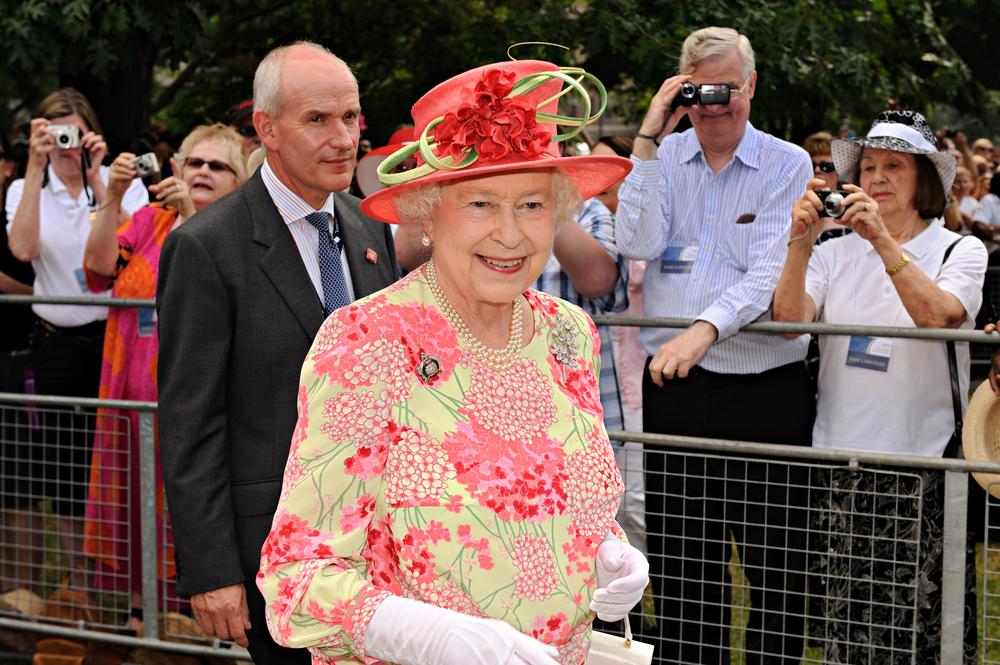Breaking
Queen surpasses Victoria for length of time on throne, but similarities endure
TORONTO — They grew up in the shadow of a throne they were never intended to occupy, then went on to carve unique and revered places in British history.
They bucked royal traditions by marrying their cousins for love, raised broods of children that thrust them into an unwelcome spotlight, and coped with public criticism about their aloofness and emotional reserve.
But among the many parallels that exist between Queens Elizabeth and Victoria, one looms larger than the rest — longevity.
On Sept. 9, the current Queen will succeed Victoria as the United Kingdom’s longest-reigning monarch after 63 years and 218 days on the throne.
The years from 1837 to 1901 when Victoria ruled were markedly different from Elizabeth’s era, heralding the United Kingdom’s transformation into an industrial and colonial superpower.
The women who presided over more than half of their respective centuries, however, are strikingly alike.
Royal commentator Rafe Heydel-Mankoo said the two share similar temperaments and values, something the British public was quick to grasp.
Although a teenaged Victoria ascended to the throne after decades of previous scandal-plagued rulers and Elizabeth became queen as a young married woman, he said Britons quickly came to view them in similar lights.
“They brought in a new spirit of hope — Victoria, after all the scandals of her uncles, and Elizabeth after all the problems of the Depression and the Second World War and the post-colonial devastation of Britain and the British economy,” he said in a telephone interview from London.
“They both basically offered hope and a new, bright future.”
The two queens led strikingly different lives in early childhood, with Victoria’s life rigidly under the control of a domineering single mother and Elizabeth enjoying a more conventional family life with loving parents and an adored younger sister.
That changed for both after the age of 10, however, when twists of fate decreed that they would each have to assume the throne.
Victoria became heir presumptive after a number of royal deaths left her as the only legitimate member of the family in the line of succession.
The present-day Queen’s fate was decided after her father, George VI, took the throne after it was abdicated by his elder brother.
Historian Barbara Rusch said both future queens learned of their pending responsibilities as pre-teens, and neither one shied away from the daunting futures before them.
The then-Princess Elizabeth emerged as a poised public presence at age 14 with a radio address to British children sent away from home at the height of the Second World War.
Rusch said the confidence she expressed in that speech with the line “in the end all will be well” was echoed more than a century earlier by Victoria, who greeted the news of her eventual accession to the throne with the declaration: “I will be good.”
They both also showed early signs of tenacity, Rusch said, particularly when it came to their future husbands.
Although relatives had more than one prospective suitor in mind for Victoria, she fell hard for her German cousin Prince Albert and wrote rapturously in her diary about her excitement to marry him.
Elizabeth had to fight harder to make Prince Philip the future Duke of Edinburgh, Rusch said, adding her parents initially balked at her choice of the dashing naval officer long-rumoured to have a roving eye.
Rusch said Elizabeth’s parents made her wait a year to see if her ardour cooled before they’d give their blessing to the union. It did not, and historians agree that Philip went on to occupy the place once held by Albert as a central force in a reigning queen’s life.
Historians said both families led comparatively modest lives by royal standards in a bid to be in closer touch with traditional middle-class values. When Elizabeth married Prince Philip, for instance, Rusch said she followed the post-war norms of the day and collected clothing coupons to buy material for her wedding gown.
Although both monarchs valued their marriages, historians say that Victoria seemed more emotionally reliant on her husband.
Albert, who fathered her nine children, virtually co-ruled alongside his wife before his death in 1861. That event, Rusch said, changed Victoria’s life and English society permanently.
“It was an obsession, and she created a cult of mourning which extended to the entire empire around her sadness and her loss,” she said, adding Victoria ordered hot water and shaving gear brought to her husband’s room for years after his death.
The monarch who once revelled in court social functions and dabbled in amateur painting soon became a recluse, largely withdrawing from public life and earning a reputation of rigid aloofness that has shaped her image in popular culture.
Her reserve did not extend to the political realm, however.
Rusch said Victoria’s personal journals are filled with clear descriptions of which British prime ministers she did and did not favour. She played a quiet but active role in shaping the politics of her time, he added.
The current queen has taken the opposite path, said royal historian Carolyn Harris.
Elizabeth has always taken her role as a non-partisan constitutional monarch “very seriously,” Harris said, adding that her lack of political involvement and unflappable poise have redefined the public image of what a queen should be.
“Because she’s been on the throne for so long, her approach has become synonymous with how a constitutional monarch should behave,” Harris said.
Such exemplary behaviour didn’t always trickle down to the next generation in either case.
Both queens had first-born sons whose sexual proclivities and extra-marital antics shone uncomfortable spotlights on lives they preferred to keep private. Their parenting techniques were both questioned in similar ways.
Rusch said Victoria’s documented remarks describing herself as “no admirer of babies” can easily be compared to video footage of the Queen shaking hands with her four children after being away from them for weeks.
But public images can be deceiving. Heydel-Mankoo said both women, frequently depicted as everything from stoic to joyless, both had strong senses of humour that didn’t always shy away from the off-colour.
Heydel-Mankoo believes the parallels that run through their respective reigns were no accident, saying Victoria’s example helped mould the current queen into someone who could carry on the traditions she began.
“Queen Victoria really shaped the idea of middle-class monarchy in terms of its morality and its lifestyle,” he said. “One could argue that Queen Elizabeth is the last heir of that tradition.”






















